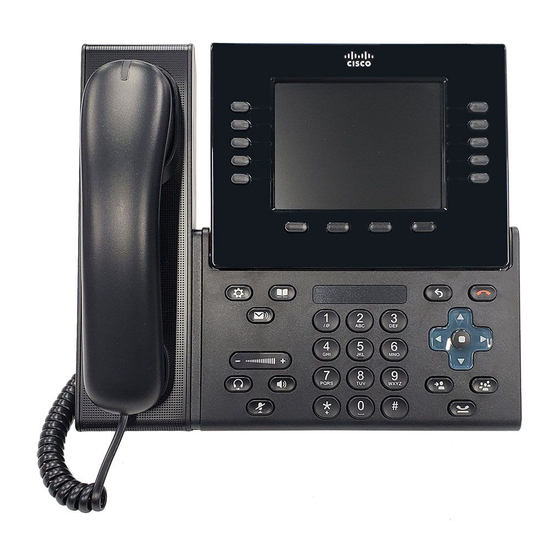Chapter 1
An Overview of the Cisco Unified IP Phone
Supported Networking Protocols on the Cisco Unified IP Phone (continued)
Networking Protocol
Trivial File Transfer
Protocol (TFTP)
User Datagram Protocol
(UDP)
Related Topics
•
•
•
What Features are Supported on the Cisco Unified
IP Phone 8961, 9951, and 9971?
Cisco Unified IP Phones function much like a digital business phone, allowing you to place and receive
phone calls. In addition to traditional telephony features, the Cisco Unified IP Phone includes features
that enable you to administer and monitor the phone as a network device.
This section includes the following topics:
•
•
•
•
Feature Overview
Cisco Unified IP Phones provide traditional telephony functionality, such as call forwarding and
transferring, redialing, speed dialing, conference calling, and voice messaging system access.
Cisco Unified IP phones also provide a variety of other features. For an overview of the telephony
features that the Cisco Unified IP Phone supports and for tips on configuring them, see the
Features Available for the Cisco Unified IP Phone" section on page
As with other network devices, you must configure Cisco Unified IP Phones to prepare them to access
Cisco Unified Communications Manager and the rest of the IP network. By using DHCP, you have fewer
settings to configure on a phone, but if your network requires it, you can manually configure an IP
Cisco Unified IP Phone 8961, 9951, and 9971 Administration Guide for Cisco Unified Communications Manager 8.5 (SIP)
OL-20861-01
TFTP allows you to transfer files over the
network.
On the Cisco Unified IP Phone, TFTP
enables you to obtain a configuration file
specific to the phone type.
UDP is a connectionless messaging
protocol for delivery of data packets.
Understanding Interactions with Other Cisco Unified IP Telephony Products, page 2-1
Understanding the Phone Startup Process, page 2-7
Ethernet Setup Menu, page 7-4
What Features are Supported on the Cisco Unified IP Phone 8961, 9951, and 9971?
Usage Notes
TFTP requires a TFTP server in your network,
which can be automatically identified from the
DHCP server. If you want a phone to use a TFTP
server other than the one specified by the DHCP
server, you must manually assign the IP address of
the TFTP server by using the Network
Configuration menu on the phone.
For more information, go to the
in the Cisco Unified Communications Manager
System Guide.
Cisco Unified IP Phones transmit and receive RTP
streams, which utilize UDP.
Cisco TFTP
chapter
"Telephony
8-2.
1-13

